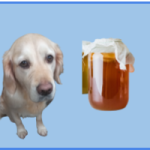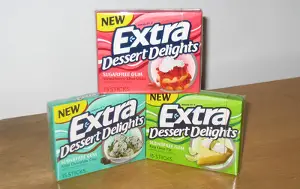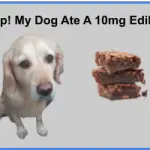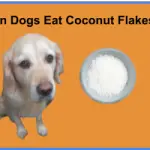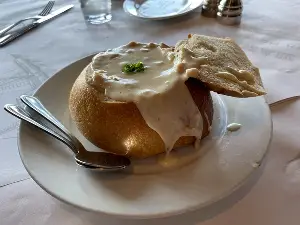
Clam chowder is a very popular dish that originates in the northeastern part of the United States that is often referred to as New England some time in the 1700s.
Its popularity soon spread amongst the French and British settlers in the region as they sought to use the huge amounts of clams that they came across as they were out at sea fishing.
This hearty soup was often made in the winter, cooked in the fireplaces that would have been burning ferociously in an effort to keep a home nice and warm.
Clam chowder was a great source of calories, nutrition and warmth when eaten, allowing those living in harsh conditions to not just survive, but to thrive and grow.
Today, clam chowder can be found in many countries all over the world, and it is eaten throughout the year.
But, purists have taken to denoting some key differences in the original New England Clam chowder, and insist that you haven’t had real clam chowder until you’ve had one that was made in that region.
A final fun fact, while many other chowders may often include tomatoes, this is seen as a grave sin when making clam chowder, ruining the overall taste and consistency of the dish.
Like many things we enjoy, we might find ourselves looking at a steaming hot bowl of clam chowder, with those little oysters crackers.
We might also be able to spot the ears of our beloved four legged family member, with their tail waving and their eyes pleading.
This causes the questions to pop into our heads, is it safe for dogs to eat clam chowder?
Is Clam Chowder Safe for Dogs to eat?
In this section, I want to look at the most commonly used ingredients in a clam chowder.
Sometimes something might look good on paper, but it’s important to take a look at the ingredients, to make sure they don’t trigger any allergies or dog specific restrictions.
Most clam chowders contain five main ingredients:clams, bacon,flour, milk and potatoes.
So let us take a look at these ingredients one by one in order to find out if they are safe for your dog to eat or toxic.
Clams
Clams are a great source of protein for dogs, but you still want to be careful. While rare, some dogs may be allergic to clams. It’s always best to let them try one or two the first time and make sure they do not have a negative reaction. Also, like most things, you want to limit their intake of clams, too much of a good thing can quickly become a bad thing.
Bacon and Milk
This is the same approach you should take with bacon and milk. Small amounts of these ingredients are ok for your dog to eat, the salt in bacon and fat in milk can lead to an upset belly or worse if they ingest too much of it.
Flour
Dogs do not need flour in their diet and it is unlikely to have a negative effect on them in small doses or when baked into a recipe, but it is important to note that dogs, like humans, can have allergic reactions to flour.
Potatoes
Finally, rounding off the main ingredients of clam chowder are potatoes.
It is very important that we never feed our dog raw potatoes, because they can make our four legged friends very sick.
Any potatoes that our dogs eat must be fully cooked, and we want to limit their intake due to the high levels of starch in them.
But our search for how suitable clam chowder is for our dogs to eat doesn’t end there.
Is clam chowder seasoning safe for dogs?
Although those five ingredients form the main bulk of the chowder, the flavour comes from the different sorts of seasonings.
And any clam chowder which is halfway decent contains lots of seasoning
Some of the most common seasonings are garlic, onion, butter, thyme, salt and pepper.
Just like the main ingredients, we want to take a moment to look at these secondary ingredients and make sure that they are safe for our dogs.
Onions and garlic
Straight out of the blocks, as dog owners we should slam on the brakes whenever we see a recipe with onions and garlic in it.
When cooked, onions and garlic produce a chemical called thiosulfate, which is actually toxic for dogs!
We want to do everything in our power to make sure that our furry family members never ingest these foods when cooked, ingesting it can make them sick or worse.
Butter, salt and pepper
When it comes to the other secondary ingredients, there isn’t anything that jumps out as toxic, but many of them are ingredients that we want to limit. Butter for example is very high in fat, which while our dogs do need, they do not want to ingest in high amounts. So, overall the rest of these common secondary ingredients are not likely to have a negative effect on our dogs, as long as we limit how much of it they are eating.
Is Clam Chowder nutritious for my dog?
One of the the first things we want to take into consideration when looking at if a food is safe for our dogs is the nutritional value. It’s important to remember that their bodies are different from ours, and they may react differently to the amount of fat or protein in a specific food.
It is also important to remember that every dog is different, larger dogs will need more fat in their diet than smaller dogs for example. So, depending on your dog’s size, you may have to adjust the levels and expectations slightly.
When looking at clam chowders, the nutritional values will vary slightly from recipe to recipe, but the values we are going to use are averages based on some extensive research.
How much clam chowder should I feed my dog?
The average serving size of clam chowder is one cup, while the average amount of food your dog should eat per meal averages between 1-3 cups depending on their size.
Has clam chowder got enough protein in it for my dog?
The average serving of clam chowder has about eleven grams of protein in it. Depending on your dog’s size they would be looking for about twenty-five grams of protein a day.
Has clam chowder got enough fat in it for my dog?
Your dog needs around 20 grams of fat a day, with a single serving of clam chowder able to provide thirteen of those grams.
Has clam chowder got too many calories in it for my dog?
Another important nutritional value is calories, which dogs, like us, use as energy for their bodies. While the amount of calories that your dog needs vary greatly depending on their size, age and activity level, a good base-line is for about one thousand calories a day. A single serving of clam chowder contains around two hundred and fifty calories in it.
Clam chowder also contains several vitamins and minerals that are a good part of our dogs daily diet. These include Vitamin A, C, Calcium and Iron.
So, can dogs have clam chowder?
Now we come to the question that we asked at the beginning of this article, is it safe for our dogs to eat clam chowder?
The answer to this question is, maybe with a heavy leaning towards no. This is especially true when it comes to clam chowders that you might get from a restaurant or your local grocery store.
While these chowders do often contain a list of ingredients, they won’t say how much of each ingredient has been used in the recipe. This means you don’t know how much butter or garlic was used in the recipe, making it hard to judge if it’s safe for your dog.
If you absolutely had to serve your dog clam chowder, you could work to make your own version. While this is a viable option, allowing you to control how much of each ingredient you put in, and not adding ingredients like cooked onions that are toxic for dogs,it’s hard to argue that this is a viable and safe solution.
Instead, you might want to build clams into your dog’s existing diet, maybe as a weekly treat. Clams are very flavorful and your dog will love their texture as they chow down. You can even mix it with some of their existing diet, to spread that flavor out and give them a special meal, while keeping their health in the forefront of your mind.
Photo credits
¹ Photo by Kevin Lanceplaine on Unsplash


